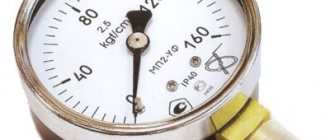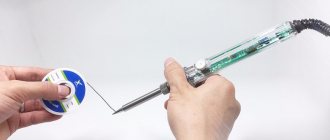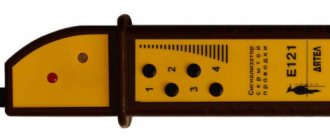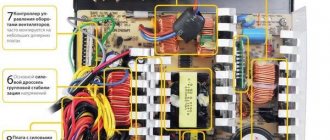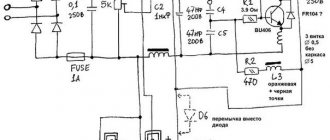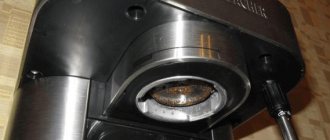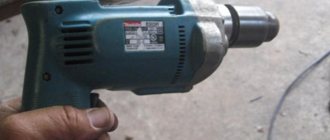3 years ago
- Heating element device
- The main causes of heating element breakdowns
- How to determine that the heating element is faulty?
Many washing machine parts fail, but often this does not become a big problem. However, when a thermoelectric heater, that is, a heating element, fails, this problem cannot be solved so easily.
After all, with a broken heating element, further operation of the washing machine is impossible. The program is immediately interrupted and an error appears on the display.
In order for the washing machine to work, cold water is enough. This is because inside the washing machine there is a heating element - heating element. It must heat the water that enters the tank of the machine. As a result, the water is heated to the temperature required for a specific washing program.
Heating element device
The heater in the machine is a tubular part. And inside it is a conductor. This conductor has high resistance. It is endowed with the ability to withstand heating to high temperatures.
The heating coil around is covered with a dielectric with high thermal conductivity. It transfers heat to the outer shell of the heating element, made of steel. The ends of the heater spiral are soldered to the contacts to which the supply voltage goes. Nearby is a thermocouple that measures the heating level of the liquid in the tank.
How to check the heating element for malfunctions
For ordinary home water heaters, testing is not difficult. It is necessary to remove the heating element from the tank and remove the thermostat (thermostat). Set the multimeter switch to 200 ohms. Next, we place the probes on the terminals of the electrode contacts.
The calculated resistance is calculated based on the power of the heating element, which is always indicated on it.
Formula for design resistance:
R = U2/P
U is voltage (220-230 V). P - power (if indicated in kW, then multiply by 1000).
- If the tubular electric heater is working properly, then the value will be close to the calculated value. For example, if your heating element is 2.5 kW (2,500 W), then R = 2202 / 2500 = 19 Ohm. Deviation of the actual measurement is up to 15% normal.
- If it shows 0, then there is a short circuit inside the heater. If 1, then there is a break (one indicates that the resistance is infinite). In both cases, only replacement with a new one.
Some measure the resistance of the electric heater and calculate the power, comparing it with the rated one. The formula is reverse. Heating element power: P = U2/R. But the deviation should also not be more than 15%. But you still have to count, so the difference is not very big.
Check by heating element groups
Next, we will analyze cases with a three-phase circuit and large industrial ones. First of all, it is worth checking the starting protection equipment. At this stage, contacts, wire connections, insulation integrity, operability of the control circuit and the presence of voltage on the heating elements are checked. Take measurements with a multimeter or ohmmeter.
This is done as follows. From the secondary power contacts of magnetic starters (CM), it is necessary to measure the resistance of each group of heating elements relative to the neutral conductor (N). Based on the measurements obtained, we can make an initial conclusion about the performance of the TEN in the group.
In a group with a non-working heating element, the total resistance will be higher than in a fully working one. This may also indicate an unsatisfactory condition of the contacts.
Look at the photo above. Let’s say we have 2 Ohm heating elements in groups. Which group of heaters do you think is faulty?
Formula for finding total resistance:
R = (R1*R2) / (R1+R2)
After some simple calculations, you can find out that there are faults in groups 1 and 3. Since the total resistance of two parallel connected heating elements will be equal to 1 Ohm (the numbers are taken as an example).
This means that next you need to check each heating element in these groups and replace the faulty ones. Actually, this method allows you to quickly check groups at once. No need to disassemble each one. After all, there are 24+ of them.
The main causes of heating element breakdowns
There are many reasons why a heater fails. This also includes manufacturing defects. If the device is under warranty, then it can be sent to a service center to replace the heating element.
The heater also breaks due to scale on the surface of the heating element. Scale gradually settles on the body of the metal part. Scale has poor thermal conductivity. And therefore it interferes with the transfer of heat to water from the heating element. As a result, the heating element burns out due to overheating.
Scale also leads to the appearance of corrosion on the surface of the heating element. As a result, the tightness of its metal shell is broken. This is how a short circuit is caused.
Also, the heating element may break when the washing machine is used in violation of the operating instructions. For example, they wash very dirty, old things. They can also wash even those items that are not intended to be washed in a machine.
The heating element burned out?! Causes of heating element malfunction.
Causes of heating element malfunction
One of the main reasons for improper operation or failure of washing machines, water heaters, boilers and other appliances is a malfunction of the heating element. The source of the problem can be various factors: improper operation or connection, power surges, hard water.
Main causes of breakdowns
- Scale. Excess salt content (potassium, magnesium, etc.) present in water turns into a solid, poorly soluble sediment. The formation of scale leads to malfunction of the device due to the resulting overheating. The consequence of overheating is deformation/damage to the housing or burnout of the thread. To extend the life of the heater, it is worth cleaning it from lime deposits.
- Broken thread. If the heating filament burns out due to a short circuit in the network, the circuit opens and the equipment stops working.
- Breakdown to the body. Electrical energy is transferred to the device body when the insulating layer of the heater is worn or deformed. This may cause the protection to trip and cut off the power supply.
Factors leading to problems
Creating a favorable environment and protection from negative factors contributes to the long service life of the heater. Let's consider the main reasons for the failure of the heating element:
- Malfunction of the temperature control device (thermostat). Incorrect control of the thermal water level can lead to overheating and failure of the heating element. It is very difficult to recognize a thermostat failure without special equipment and knowledge. If there are signs of a problem with your household appliances, you should call a repair specialist.
- Hardness of water. Excess salts are a common problem in water pipes. Using special filters in your home will help reduce or completely avoid the influence of this unfavorable factor on the device.
- Voltage level surges. The performance of the heater directly depends on the stability of the voltage. Sudden surges in the network can cause a breakdown. Installing a voltage stabilizer will solve this problem.
- Anode consumption. Magnesium anodes in modern heaters perform a protective function. Its consumption occurs over time during the operation of the heater and leads to premature failure of the heater. This problem is solved by replacing the anode with a new one.
Proper operation and adherence to instructions will extend the life of the heater. In most cases, if a faulty heater fails, it must be replaced. Repairing a heater is an extremely complex process.
Heater Troubleshooting
If the heating element in a household appliance fails, you should quickly determine the type of failure and call a specialist. Common types of breakdowns using the example of a washing machine:
- Powder stains on linen and clothes, poor quality of washing (does not wash) are signs of failure of the heating element. Insufficient water heating during washing leads to improper operation of the washing machine.
- An unpleasant odor after washing is the first sign that the machine system is not working properly. This situation entails a malfunction of the heating element.
- Triggering of the circuit breaker. This is a sign of a breakdown in the body. In this case, it is prohibited to turn off the device until repair work is carried out.
- Violations in the washing machine program. This factor indicates a violation of the water heating process.
It is worth noting that repairing or diagnosing any equipment without special knowledge can lead to serious injuries, as well as other equipment breakdowns.
Diagnostics of heating element
You can determine the presence of malfunctions using the following methods:
- Visual inspection. By examining the heating element from the outside, you can determine whether the body is intact or not, as well as the presence of damage of varying degrees of severity. Damage includes: scratches, swelling of the case, cracks.
- Checking using special instruments: tester, multimeter. Check resistance and compare with other heater indicators under normal conditions. If the data differs, then the heating element should be replaced.
- Ringing for breakdowns. The tester is set to dialing mode. The presence of a signal indicates a heater malfunction.
It is worth noting that care must be taken when reassembling the device. Incorrect connection of the device elements can lead to a short circuit and failure of the device. If any malfunctions of the heating element or their signs occur, you should call a qualified person to carry out diagnostics.
How to extend the service life
Following the recommendations, as well as eliminating the causes of heater failure, can extend the life of household appliances (water heater, washing machine, etc.). There are a few important rules to remember:
- Install a voltage stabilizer to prevent power surges in a timely manner.
- Use a special filter to soften the water. High-quality filters easily cope with scale formation.
- Monitor the condition of the magnesium anode. The consumption of most of the anode may indicate its imminent replacement.
- Average temperature. Long-term operation of the device at high temperatures leads to rapid wear and failure of the heater.
If a tubular heater malfunctions, it can be replaced with an original or high-quality analogue. provides a large selection of spare parts of the highest quality standard to restore the functionality of a household appliance. Installing spare parts will return the device to operation and save time and money.
You might be interested in this:
Copper or stainless steel? Which heating element to choose?
The housing of heating elements in household and industrial appliances (water heaters) is most often made of copper or stainless alloys.
How to check the heating element?!
Heating elements are used in a large number of household devices: irons, electric kettles, washing machines, boilers and READ MORE
Selecting the wire cross-section for the heating element
Heat-resistant wires and cables are used in any equipment that is powered from the network. Long-term operation READ MORE
Infrared heaters
The high demand for infrared heaters in industry and in everyday life is due to uniform temperature supply. READ MORE
